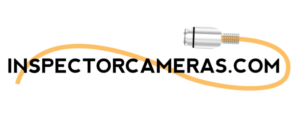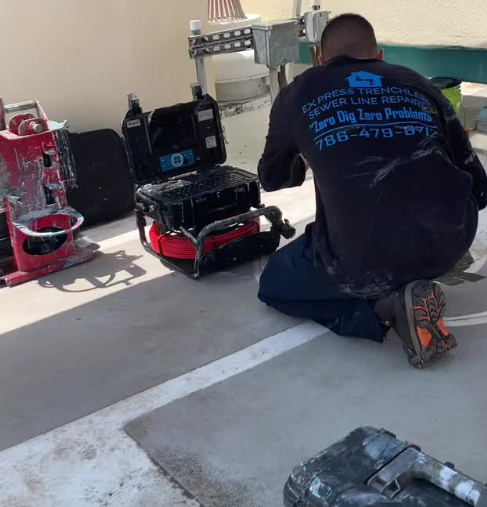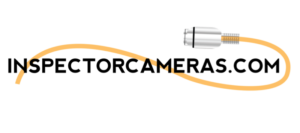We live in a digital age, and technology has permeated virtually every aspect of our lives. From smartphones to smart homes, we’ve become accustomed to the convenience and efficiency that technology offers. But have you ever considered how technology is revolutionizing the world of home inspections? In this article, we’ll explore how home inspectors are embracing cutting-edge technology to deliver more accurate, efficient, and comprehensive inspections, with a special focus on the use of drain inspection cameras. Let’s dive in!
The Evolution of Home Inspection
Long gone are the days of home inspectors carrying around clipboards, taking notes on paper, and relying on manual processes. Today, modern home inspectors utilize digital tools, such as inspection software, mobile apps, and cloud storage, to streamline their workflow and improve accuracy. These digital solutions not only save time but also ensure that reports are organized, legible, and easily accessible for clients.
The Rise of Drones: A Bird’s Eye View
Drones have revolutionized home inspections, particularly when it comes to assessing roofs, chimneys, and other hard-to-reach areas. With high-resolution cameras and advanced navigation systems, drones can capture detailed images and videos that would be impossible to obtain using traditional methods. This aerial perspective allows home inspectors to identify potential issues without risking personal injury or causing damage to the property.
Harnessing the Power of Drain Inspection Cameras
A drain inspection camera is a specialized tool used by home inspectors and other professionals to examine the interior of pipes, drains, and sewer lines. This waterproof device typically consists of a flexible cable with a small camera and LED lights at the end, which is connected to a monitor or recording device. The camera can be inserted into the pipe and navigated through bends and turns, allowing the inspector to visually assess the condition of the pipe and identify any issues.
The Benefits of Using Drain Inspection Cameras
Enhanced Accuracy and Detail
One of the most significant advantages of using a drain inspection camera is the level of detail and accuracy it provides. With a clear view of the interior of pipes, inspectors can identify issues such as blockages, leaks, corrosion, and tree root intrusion with confidence. This level of detail is crucial for making informed decisions about repairs or replacements and can ultimately save homeowners time and money.
Non-Destructive Inspection Method
Traditional methods of pipe inspection often involve digging or cutting into walls, floors, or the ground to gain access to the pipes. This can be invasive, expensive, and time-consuming. Drain inspection cameras, on the other hand, allow for a non-destructive inspection process. By inserting the camera through an existing access point, such as a cleanout, inspectors can assess the condition of the pipes without causing damage to the property.
Improved Safety and Efficiency
Using a drain inspection camera reduces the need for inspectors to enter confined spaces, such as crawlspaces or trenches, to assess pipes. This reduces the risk of injury and improves overall safety. Additionally, drain inspection cameras can quickly and efficiently identify issues, reducing the time and effort required to complete an inspection.
The Future of Home Inspection Technology
Augmented Reality (AR) and Virtual Reality (VR) in Home Inspections
As AR and VR technologies continue to advance, they’re likely to become valuable tools for home inspectors. Imagine being able to virtually walk through a property, overlaying inspection data and annotations onto the environment in real-time. This immersive experience could help inspectors identify potential issues more efficiently and provide clients with a better understanding of their property’s condition.
Artificial Intelligence (AI) and Machine Learning
The integration of AI and machine learning into home inspection software has the potential to revolutionize the industry. By analyzing vast amounts of data and identifying patterns, these technologies can assist inspectors in detecting issues that may have been overlooked, predicting potential problems, and providing more accurate assessments of a property’s condition.
The Internet of Things (IoT) and Smart Home Systems
As smart home technology becomes increasingly popular, home inspectors will need to adapt to assessing and evaluating these advanced systems. IoT devices, such as smart thermostats, lighting, and security systems, can provide valuable data on a property’s performance and energy efficiency, offering inspectors new insights and opportunities for analysis.
Conclusion
Technology has undeniably transformed the home inspection industry, improving efficiency, accuracy, and safety. Drain inspection cameras, in particular, have proven to be invaluable tools for assessing the condition of pipes and sewer lines. As we look to the future, innovations such as AR, VR, AI, and IoT will continue to reshape the way home inspections are conducted, offering even greater insights and benefits for both inspectors and clients.
FAQs
How does a drain inspection camera work?
A drain inspection camera consists of a flexible cable with a small camera and LED lights at the end, connected to a monitor or recording device. The camera is inserted into the pipe and navigated through bends and turns, allowing the inspector to visually assess the condition of the pipe and identify any issues.
Can a drain inspection camera detect leaks?
Yes, drain inspection cameras can help identify leaks within pipes by providing a clear view of the interior. Inspectors can spot cracks, corrosion, or other signs of damage that may be causing the leak.
What other technology is commonly used in home inspections?
In addition to drain inspection cameras, home inspectors may use digital inspection software, mobile apps, cloud storage, drones, thermal imaging cameras, and moisture meters to enhance their inspections.
How does AI and machine learning benefit home inspections?
AI and machine learning can analyze large amounts of data and identify patterns to help inspectors detect issues, predict potential problems, and provide more accurate assessments of a property’s condition.
What is the role of IoT devices in home inspections?
IoT devices, such as smart thermostats, lighting, and security systems, can provide valuable data on a property’s performance and energy efficiency, offering inspectors new insights and opportunities for analysis.


